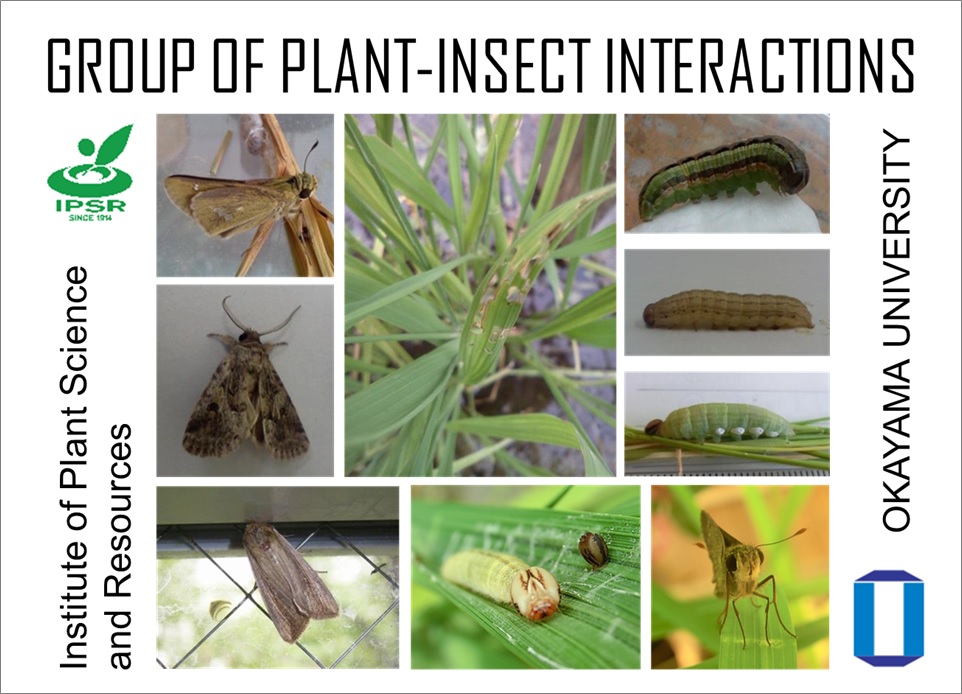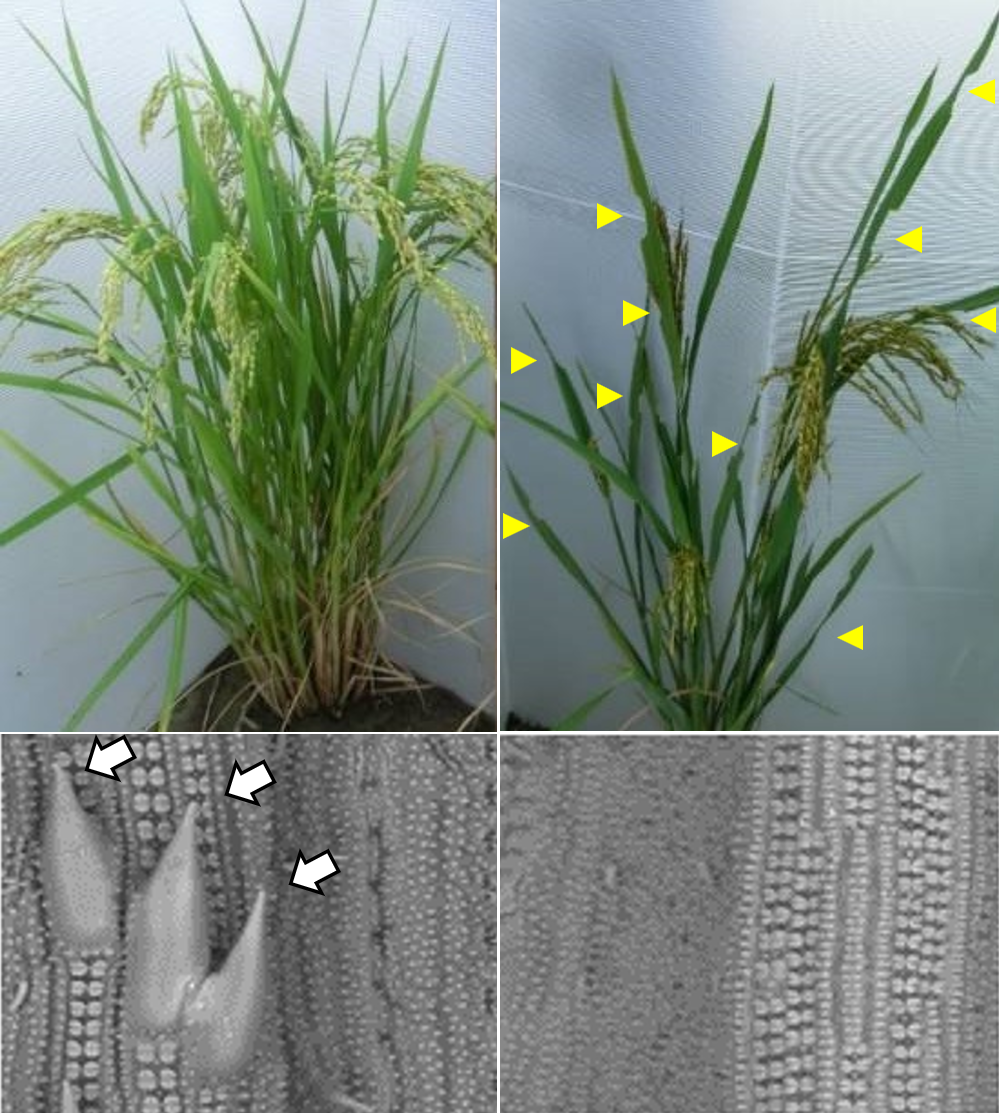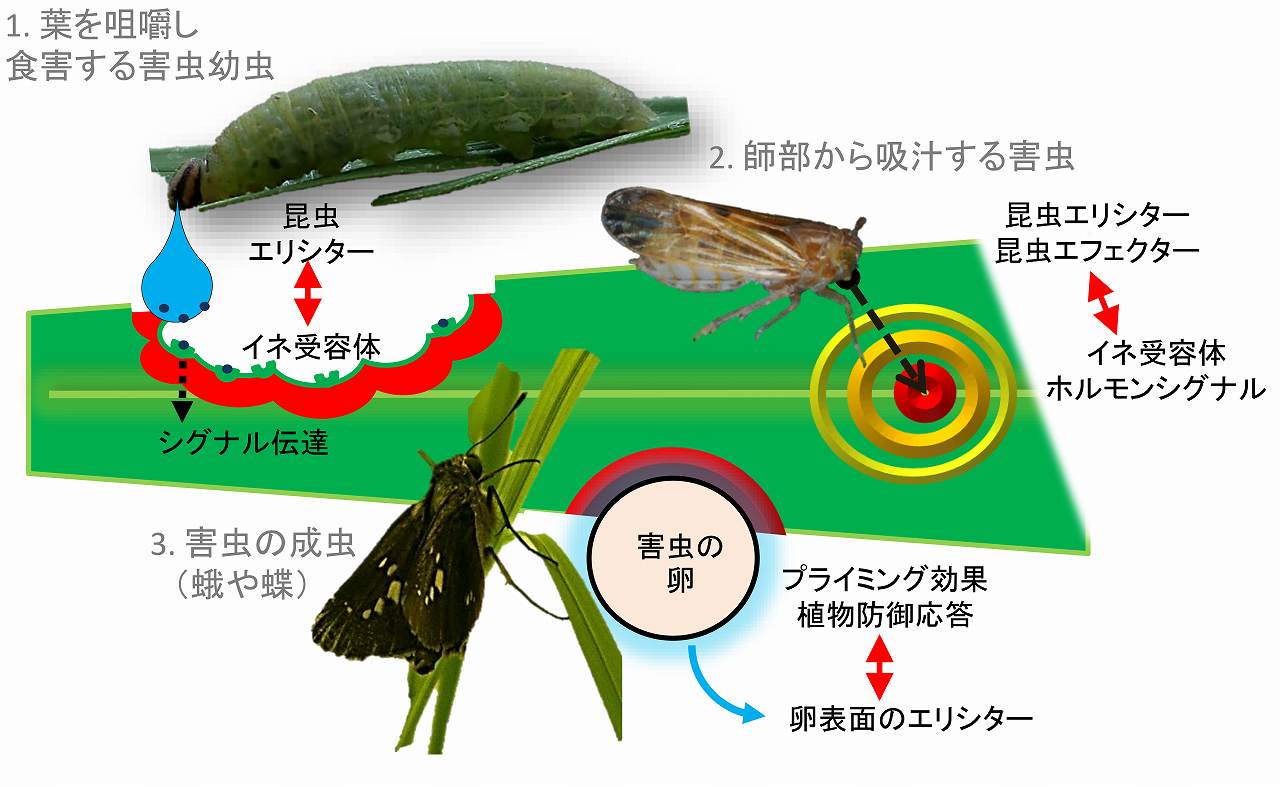Plant-Insect Interactions

Elucidation of plant-insect interactions at the molecular level
Establishment of effective plant defense systems against herbivores in natural history reflects the existence of extremely variable interactions between plants and insects, also known as co-evolution process. Our group strives to understand, at a molecular level, the mechanisms of activation, signal transduction and metabolic basics of plant defenses triggered after the recognition of insect attack. Furthermore, we target sustainable pest control by the use of natural enemies and their attraction to herbivore-infested plants by the emissions of various volatile organic compounds (VOCs) from plants.
 |
|
|---|---|
 |
|
Understanding of metabolic defense against herbivores in plants
 Plants activate powerful protective shield against feeding herbivores that involves biosynthesis of various toxic phytoalexins. While spectrum of phytoalexins in plants is vast, their biosynthesis and regulation during herbivory are less known. We use monocot plant models, including rice and sorghum, to identify novel metabolic patterns associated with herbivory. We look for transcriptional regulators involved in the regulation of biosynthetic genes for these compounds, in particular those induced in response to herbivore attack. We also study the role of plant hormones as secondary messengers in defense signaling pathways against herbivores.
Plants activate powerful protective shield against feeding herbivores that involves biosynthesis of various toxic phytoalexins. While spectrum of phytoalexins in plants is vast, their biosynthesis and regulation during herbivory are less known. We use monocot plant models, including rice and sorghum, to identify novel metabolic patterns associated with herbivory. We look for transcriptional regulators involved in the regulation of biosynthetic genes for these compounds, in particular those induced in response to herbivore attack. We also study the role of plant hormones as secondary messengers in defense signaling pathways against herbivores.
Research on perception of herbivory in plants
 The strength of plant defense largely depends on early detection of elicitor molecules from herbivores which are deposited in plant wounds during feeding. As the number of identified elicitors is still limited, we aim identification of novel elicitors using rice plants and their herbivores as our model systems. We develop efficient bioassays for rapid detection and isolation of novel compounds, use biochemical techniques for their characterization, and intact plants for functional analyses of these novel herbivory-associated molecular patterns (HAMPs).
The strength of plant defense largely depends on early detection of elicitor molecules from herbivores which are deposited in plant wounds during feeding. As the number of identified elicitors is still limited, we aim identification of novel elicitors using rice plants and their herbivores as our model systems. We develop efficient bioassays for rapid detection and isolation of novel compounds, use biochemical techniques for their characterization, and intact plants for functional analyses of these novel herbivory-associated molecular patterns (HAMPs).
